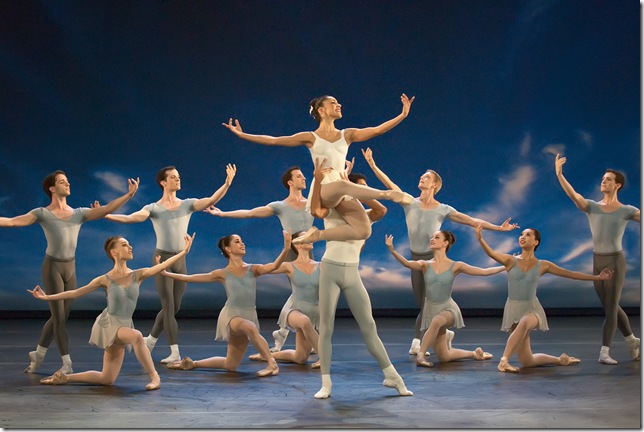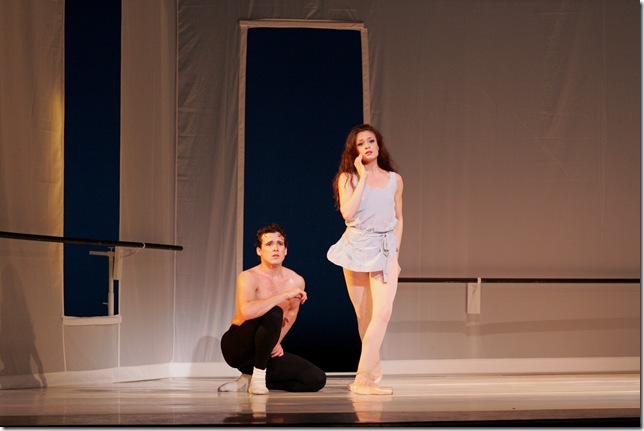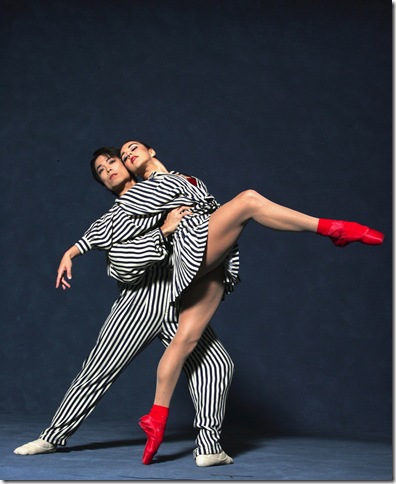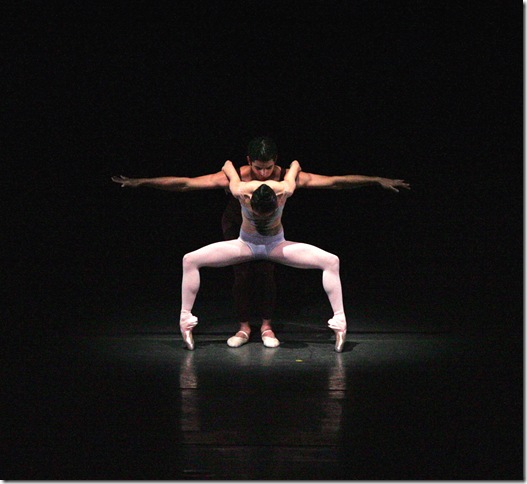For three weeks about three months ago, the Miami City Ballet played Paris to loud, raucous standing ovations.
One lasted a full 10 minutes, according to founding artistic director Edward Villella. To Villella, and many of his dancers, this was a defining point in his career.
One of the programs that brought down the house at the Paris Opera will be performed Friday at the Kravis Center in West Palm Beach, a program that contains four selections that run the gamut of ballet. Program 1 includes Jerome Robbins’ Afternoon of a Faun,
George Balanchine’s lively Square Dance, Christopher Wheeldon’s Liturgy and Twyla Tharp’s energetic In the Upper Room.
“I think part of the reason this program was so well-received in Paris is that the French audience is not normally exposed to this repertoire,” said Miami City Ballet principal dancer Jennifer Kronenberg, who stars in Afternoon and dances In the Upper Room and Liturgy. “The French have a different demeanor that suits what they do best — the classical repertoire. They weren’t used to seeing the Balanchine and Robbins approached with such energy and enthusiasm.”
Kronenberg describes the experiences as “surreal, euphoric and dreamlike,” which perhaps may be how Villella, 75, felt when only a matter of weeks later he was asked to step down as the company’s artistic director.
“I danced for him for 17 years and it is hard for me to accept,” said Kronenberg, who like Villella is a native of Queens. “It is very sad. We can only enjoy him as much as we can while he is here and give as much as we can. It doesn’t get any better than Edward.”
It is ironic that Robbins choreographed Afternoon after observing Villella stretching and preening before a mirror in a rehearsal studio.
“My eyes were caught by the marvelous strange figure of a very young chap who was exploring some inward dream,” Robbins wrote in a 1997 speech he was to give while presenting Villella with a Kennedy Center Honors Award. He was unable to make the ceremony, but his handwritten speech is part of the archive at The Robbins Rights Trust.
“He was leaning relaxed against the bar. He seemed like some animal; young, beautifully shaped, and ready at any moment to develop into a young man. Then something happened. Slowly, he pushed his arms against the bar and stretched his legs backwards carefully, slowly, not paying any attention to the exercise given to the others.”
Robbins’ Afternoon, set to Claude Debussy’s tone poem of the same name, is very different than the famed Vaslav Nijinsky choreography and performance (1912), which featured a mythical faun dancing with a couple of nymphs. The Robbins pas de deux is set in a ballet studio and dramatizes a fleeting encounter between a young man absorbed by his reflection in a mirror and a young woman who interrupts this reverie. It is the first principal role Villella danced for New York City Ballet.
“It is about each of them coming into their own sensuality and sexuality,” explained Kronenberg. “They become enthralled with their own images in the mirror.”
The mirror is, of course, the fourth wall and the greatest challenge in dancing the ballet. During rehearsal dancers may use the actual studio mirror to play off one another and to manage sight lines. But once the fourth wall is removed, it takes a great deal of craft and finesse to keep the mirror trackable.
“You have to revert back to the studio and looking at yourself in the mirror and determine where your eyes would be,” Kronenberg said. “There is a moment when the boy and girl are looking at each other across the stage but in the mirror. This has to register with the audience. You have to be looking at the right place.”
A seasoned ballerina dancing the role of a jeune fille creates another set of challenges. Kronenberg said she needed to take care not to overdo the innocence or adolescent delight of her character and relied on her own memories in crafting the emotion of the role.
“There is a fine line getting the feeling of naiveté and self-exploration across to the audience without going overboard,” Kronenberg said. “You have to remember what it was like to be 14 or 15 when you had those butterflies in your stomach. How you reacted — that little gasp when the hair on the back of your neck is standing up because a boy is looking at you.”
Kronenberg said she keeps it real by remembering her teenage feelings, especially the shyness: “The ballet really speaks to the self,” she said. “Jerome Robbins is amazing that way. If you let the choreography speak for itself, you don’t have to add much on to it.”
Diametrically opposed to the formality of Afternoon is the frenzied, gyrating movement of Tharp’s In the Upper Room, a phrase she uses to mean the point where a dancer believes he or she can no longer go on, but at which their mentality propels them to greater levels of strength and endurance. It is, in other words, a runner’s high.
Set to music by Philip Glass, the 40-minute ballet begins with two dancers dressed in what appear to be red and striped pajamas swinging limbs, stretching and kicking at hypnotic speed before a deep, dark backdrop of ebony curtain.
Tharp has arranged the 13 dancers into groups. In addition to the initial “markers,” who she has said represent Chinese Fu dogs, there are the running-shoe-wearing stompers and the pointe-shoe wearing bomb squad. As the pace and intensity of the movements — jogging, martial arts, yoga, marathon dancing — increase, and parts of costumes are shed, it is easy to see why Tharp has described her Upper Room choreography as “fierce, driving and relentless,” aiming to make some furiously fast unison moves “burn the retina.”
“The biggest point she wanted to make in this ballet is that this is what she does to warm herself up and what she gives the dancers to warm up, especially the movement of the stompers,” Kronenberg said. “It is how she moves and how she gets her blood pumping. She is merciless. When you work for her, you work until you are dead on the floor.”
Again by contrast, Liturgy, a contemporary pas de deux danced by Kronenberg and her husband Carlos Guerra, is a lyrical, sensual collection of sculptural shapes that correspond to the haunting style of Fratres, by the contemporary Estonian composer Arvo Pärt.
Pärt’s minimalism has been informed by chant, and therefore evokes a slow, meditative dream-like quality. “There is a beautiful build of the music as the choreography builds,” she said, and recalls learning to perform it the first time.
“I learned it about four years ago when the company premiered it. Whenever it has been on the program, I have been dancing so many other parts I haven’t been able to do it,” Kronenberg said. “I am thrilled Carlos and I get to do it together.”
The final selection of Program 1 is a classic — Balanchine’s much-loved Square Dance with its freedom, energy and fast-paced intricate steps. First performed in 1957 with a square dance “caller” on stage, the ballet has been refined over the years. The “caller” has morphed into a moody, introspective male solo (1976), and the choreography polished to better reflect the score, which features music by the Italian Baroque composers Antonio Vivaldi and Arcangelo Corelli.
But the costumes remain loud, rowdy and good-natured, the footwork fast and filled with jumps, and even the more formal Parisian audiences were taken over by the joy of this piece.
“It is fabulous and timeless and the music is so happy and upbeat,” said Kronenberg, who stresses the technically demanding footwork. “It is one of the most challenging ballets out there for both the principals and the corps.”
The Miami City Ballet presents Program I four times at the Kravis Center: 8 p.m. Friday, 2 p.m. and 8 p.m. Saturday, and 1 p.m. Sunday. Tickets: $19 and up. Call 832-7469 or visit www.kravis.org, or visit www.miamicityballet.org.



